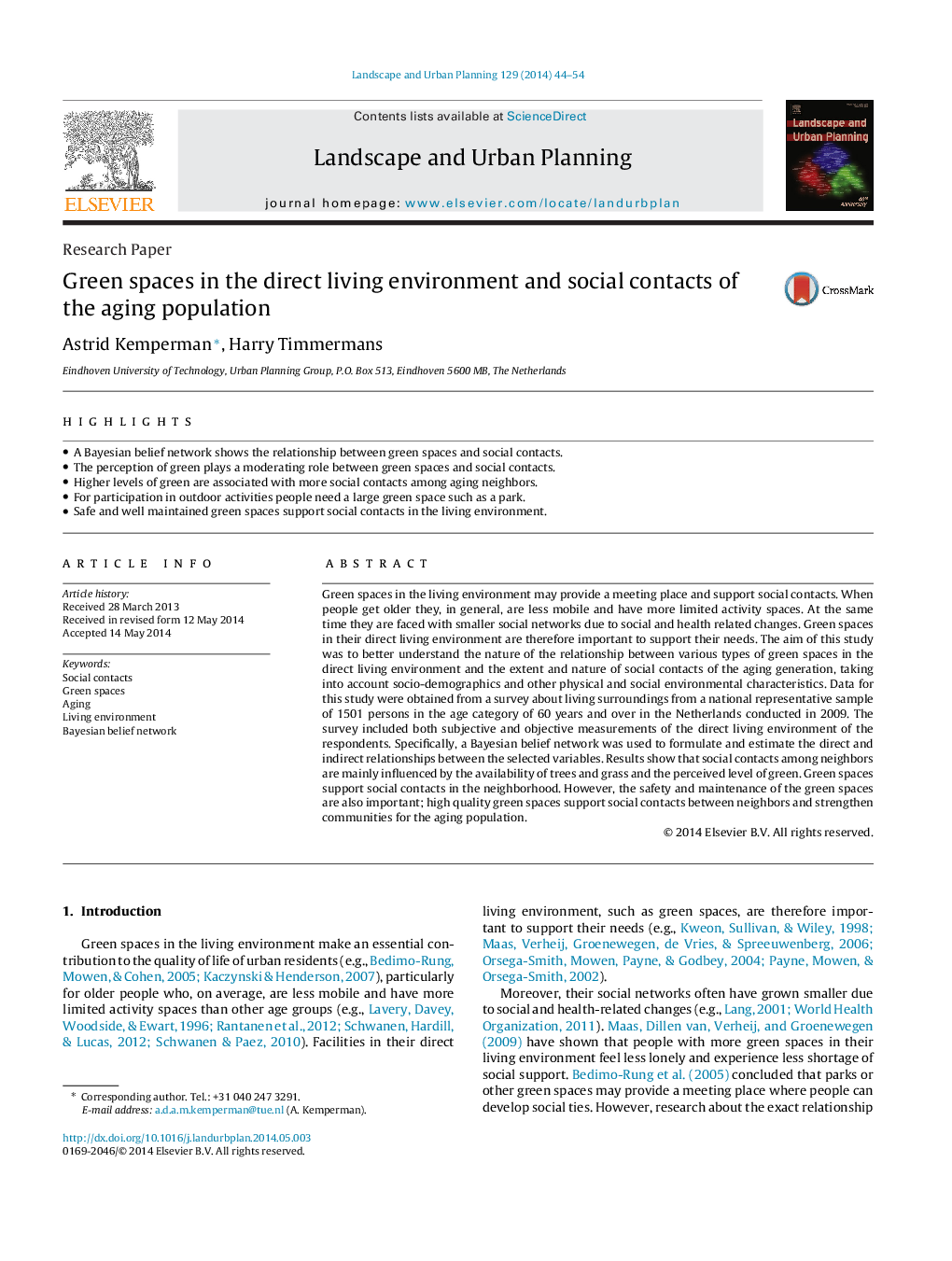| Article ID | Journal | Published Year | Pages | File Type |
|---|---|---|---|---|
| 7461383 | Landscape and Urban Planning | 2014 | 11 Pages |
Abstract
Green spaces in the living environment may provide a meeting place and support social contacts. When people get older they, in general, are less mobile and have more limited activity spaces. At the same time they are faced with smaller social networks due to social and health related changes. Green spaces in their direct living environment are therefore important to support their needs. The aim of this study was to better understand the nature of the relationship between various types of green spaces in the direct living environment and the extent and nature of social contacts of the aging generation, taking into account socio-demographics and other physical and social environmental characteristics. Data for this study were obtained from a survey about living surroundings from a national representative sample of 1501 persons in the age category of 60 years and over in the Netherlands conducted in 2009. The survey included both subjective and objective measurements of the direct living environment of the respondents. Specifically, a Bayesian belief network was used to formulate and estimate the direct and indirect relationships between the selected variables. Results show that social contacts among neighbors are mainly influenced by the availability of trees and grass and the perceived level of green. Green spaces support social contacts in the neighborhood. However, the safety and maintenance of the green spaces are also important; high quality green spaces support social contacts between neighbors and strengthen communities for the aging population.
Related Topics
Life Sciences
Agricultural and Biological Sciences
Ecology, Evolution, Behavior and Systematics
Authors
Astrid Kemperman, Harry Timmermans,
